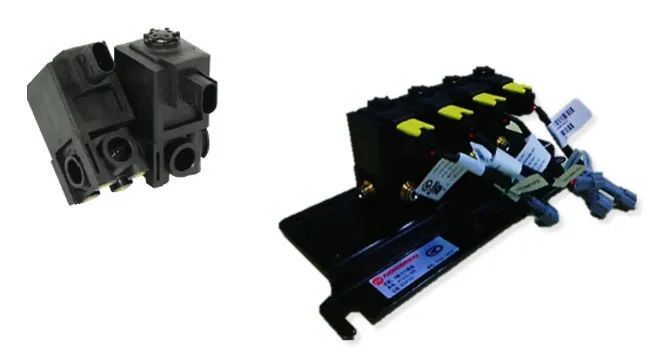What is the function of the 223.991.01 Seitz sealing solenoid valve?
223.991.01 Seitz sealing solenoid valveWhat is its function?

The 23.991.01 Seitz sealing solenoid valve is a basic component for controlling fluid automation, belonging to the actuator category, not limited to hydraulic and pneumatic systems. It is used in industrial control systems to regulate parameters such as the direction, flow, and speed of the medium. The solenoid valve has a closed cavity with a hole at different positions, each connected to different oil pipes. In the middle of the cavity, there is a piston, with two electromagnets on either side. The side of the electromagnetic coil facing the conductor will be attracted. By controlling the movement of the valve, different oil discharge holes can be opened or closed. When the oil discharge hole is continuously open, hydraulic fluid will enter different pipelines, and then the pressure of the oil will push the piston of the oil cylinder, which drives the piston rod, and the piston rod drives the mechanical device. Thus, by controlling the current of the electromagnet, mechanical movement can be controlled.
Electromagnetic valves can be divided into three main categories based on their principles:
1. Direct-acting solenoid valve
Principle: When the electromagnetic coil is energized, the electromagnetic force causes the closing part to detach from the valve seat, opening the valve; when the power is cut off, the electromagnetic force disappears, and the spring closes and presses against the valve seat, closing the valve. Features: It can operate normally under vacuum, negative pressure, or zero pressure, but generally does not exceed a diameter of 25mm.
2. Step direct-acting solenoid valve
223.991.01 Seitz sealing solenoid valvePrinciple: It is directly combined with the pilot principle. When the pressure difference between the inlet and outlet is small, the power and electromagnetic force will directly reverse the pilot valve and the main valve's closing component upwards, opening the valve. When the pressure difference between the inlet and outlet begins, the pilot valve with electromagnetic force causes the pressure in the lower chamber of the main valve to rise, and the pressure in the chamber to drop, thus using the pressure difference to promote the rise of the main valve. When the power is cut off, the pilot valve uses spring force or medium pressure to push the closing part to close the valve. Features: It can work reliably under zero pressure difference or high vacuum, but requires a large power and must be installed vertically.
3. Pilot-type Seitz sealing solenoid valve 223.991.01
223.991.01 Seitz sealing solenoid valvePrinciple: After energizing, the electromagnetic force opens the pilot hole, allowing the chamber pressure to rapidly decrease, forming a high and low pressure difference around the closing component and the surrounding environment. The fluid pressure continuously pushes the closing component upwards, opening the valve; when the power is cut off, the spring force closes the pilot hole, and the pressure change in the inlet market is rapid, and no low pressure difference is formed around the valve through the bypass hole, while the fluid pressure also pushes the closing component downwards, closing the valve. Features: The upper limit of the fluid pressure management range is very high, but it needs to meet different fluid pressure difference conditions.
The 223.991.01 Secsch Seitz sealing solenoid valve contains a closed cavity, with a piston in the middle and two electromagnets on either side of the cavity. Once the solenoid coil is energized, the valve body will be attracted in the direction of the electromagnet; there are opening holes at different positions in the cavity, connected to different oil pipes, thus controlling the movement of the valve body and selecting the outlet hole of that part. Since the oil inlet hole is normally open, the movement of the valve body allows hydraulic oil to enter different exhaust pipes, and the pressure of the oil pushes the piston of the cylinder, which then pushes the piston rod, driving the mechanical device. Using this principle, mechanical movement can be controlled by disconnecting the current of the electromagnet.
Related News
What impact does the F011068 Norgren valve group pilot valve have?
2022-12-23 11:19
What is the function of the 191.019.01 Saichi SEITZ pilot valve?
2022-09-20 13:37

